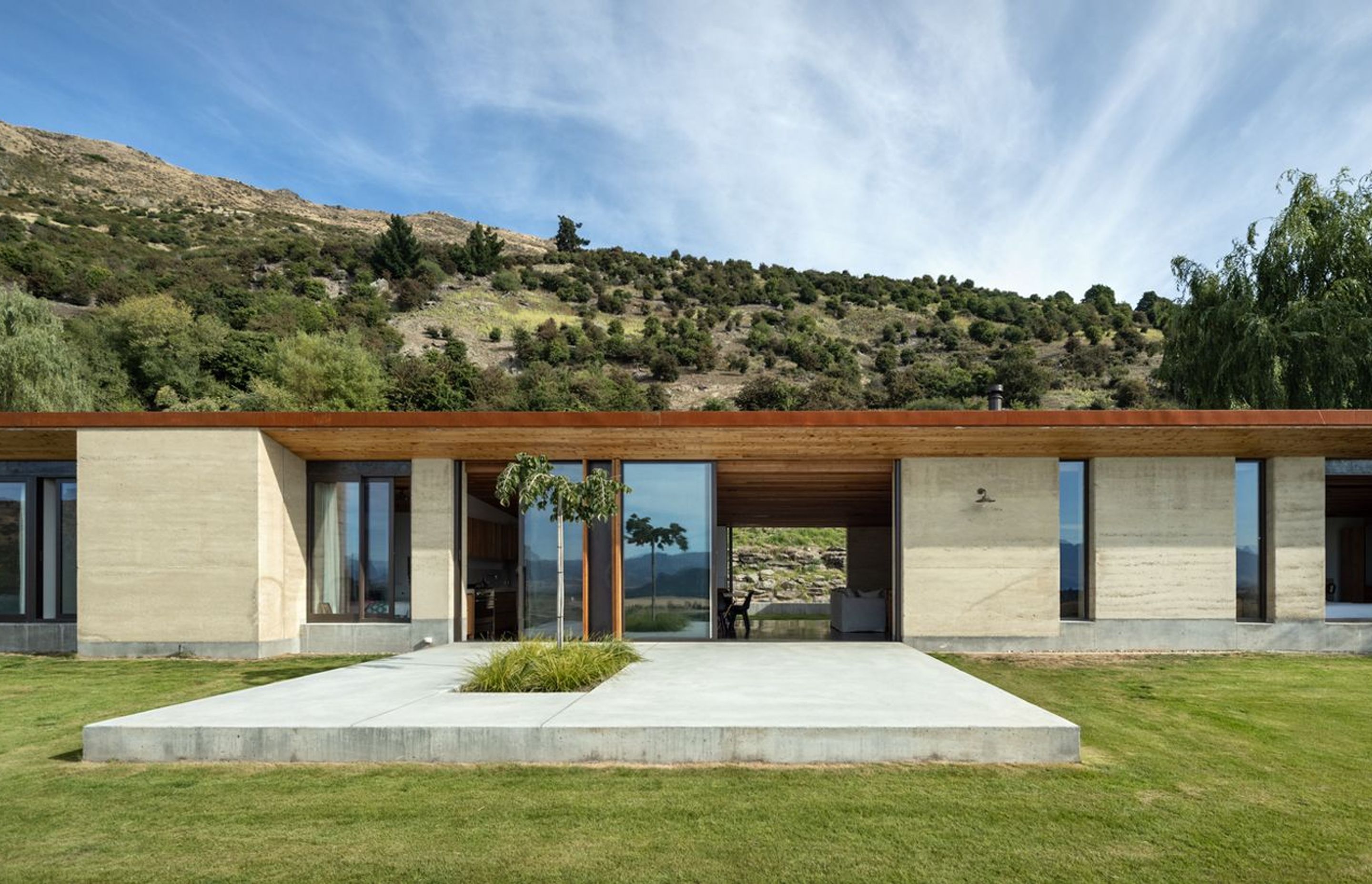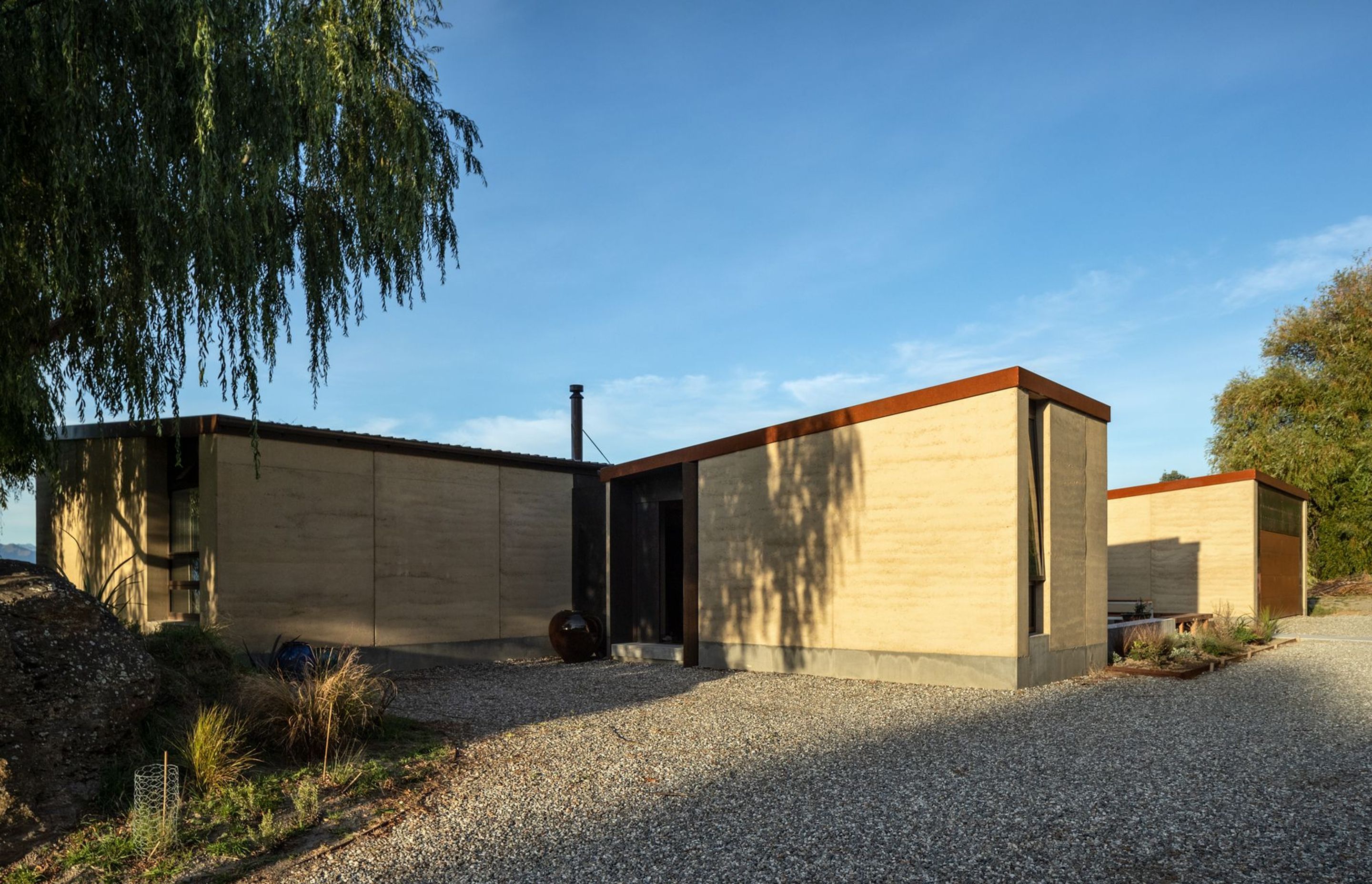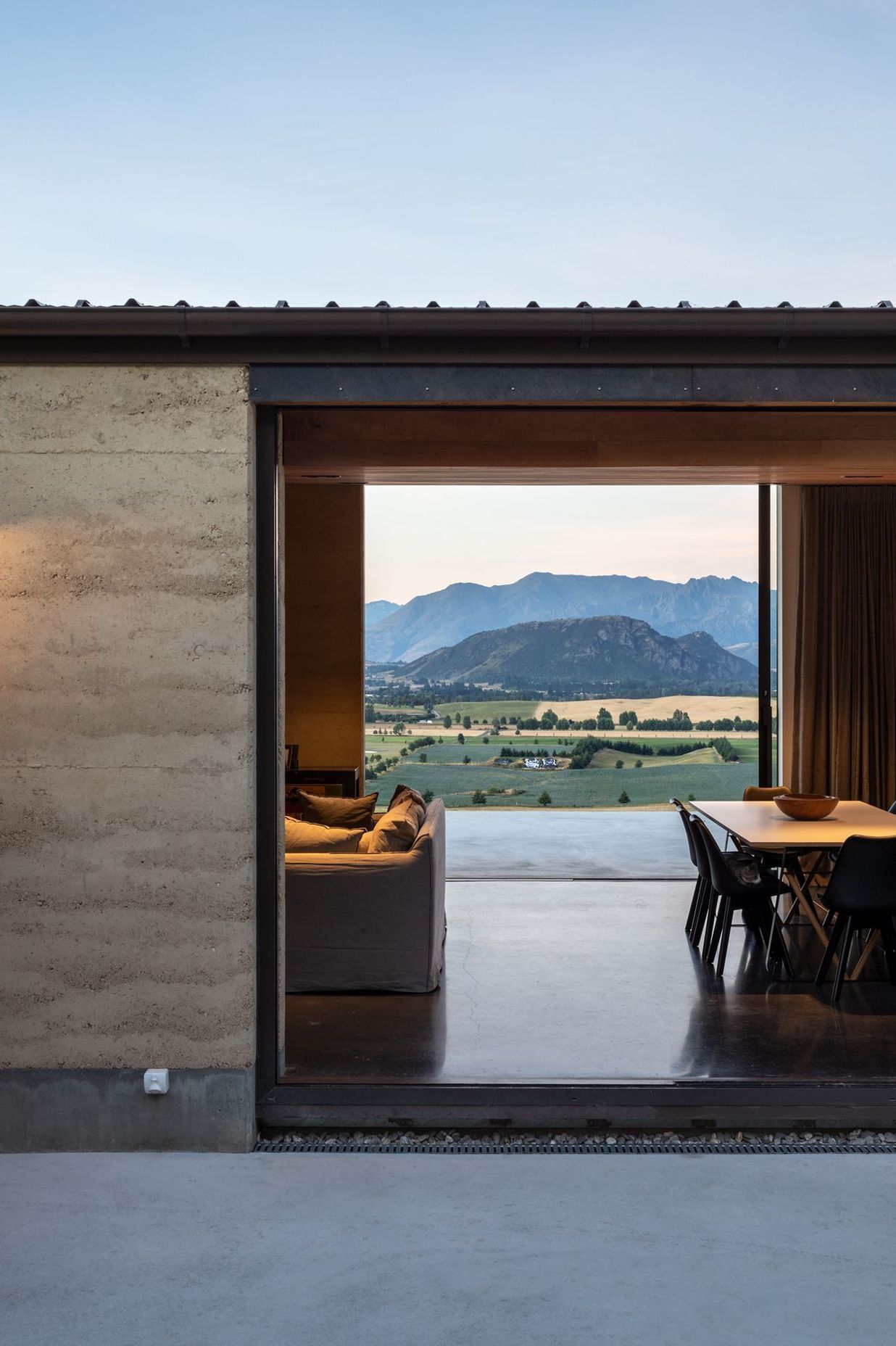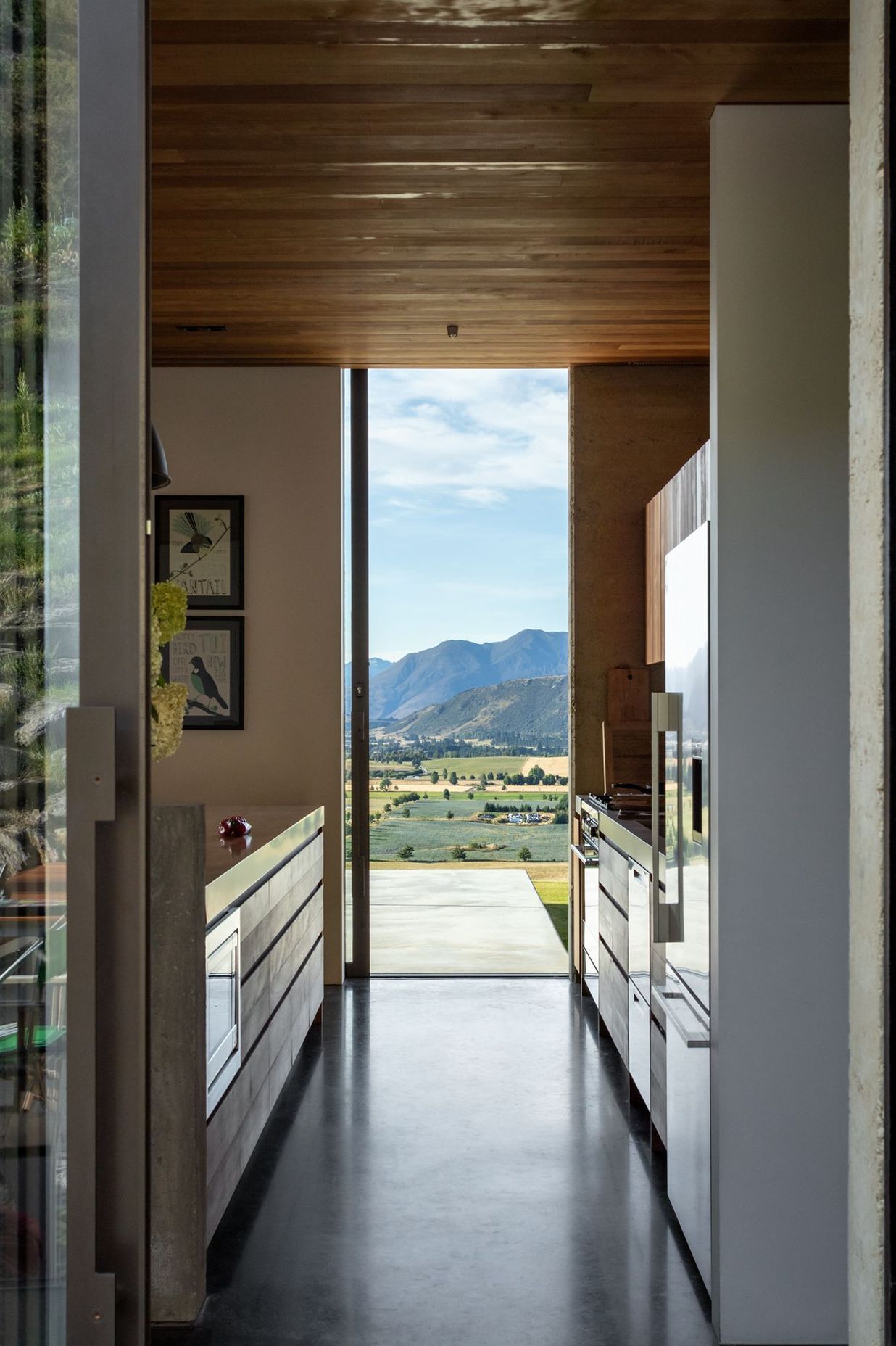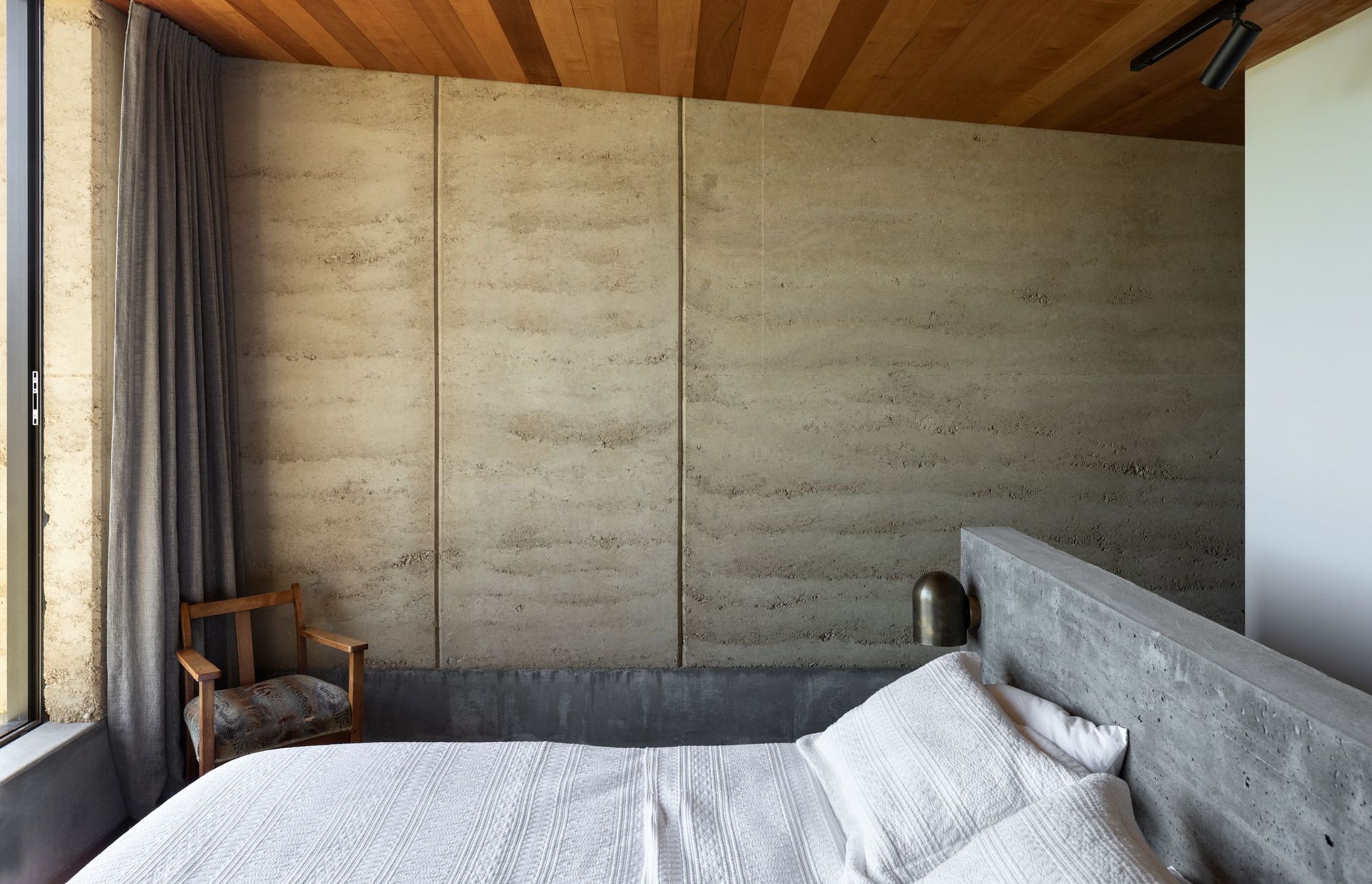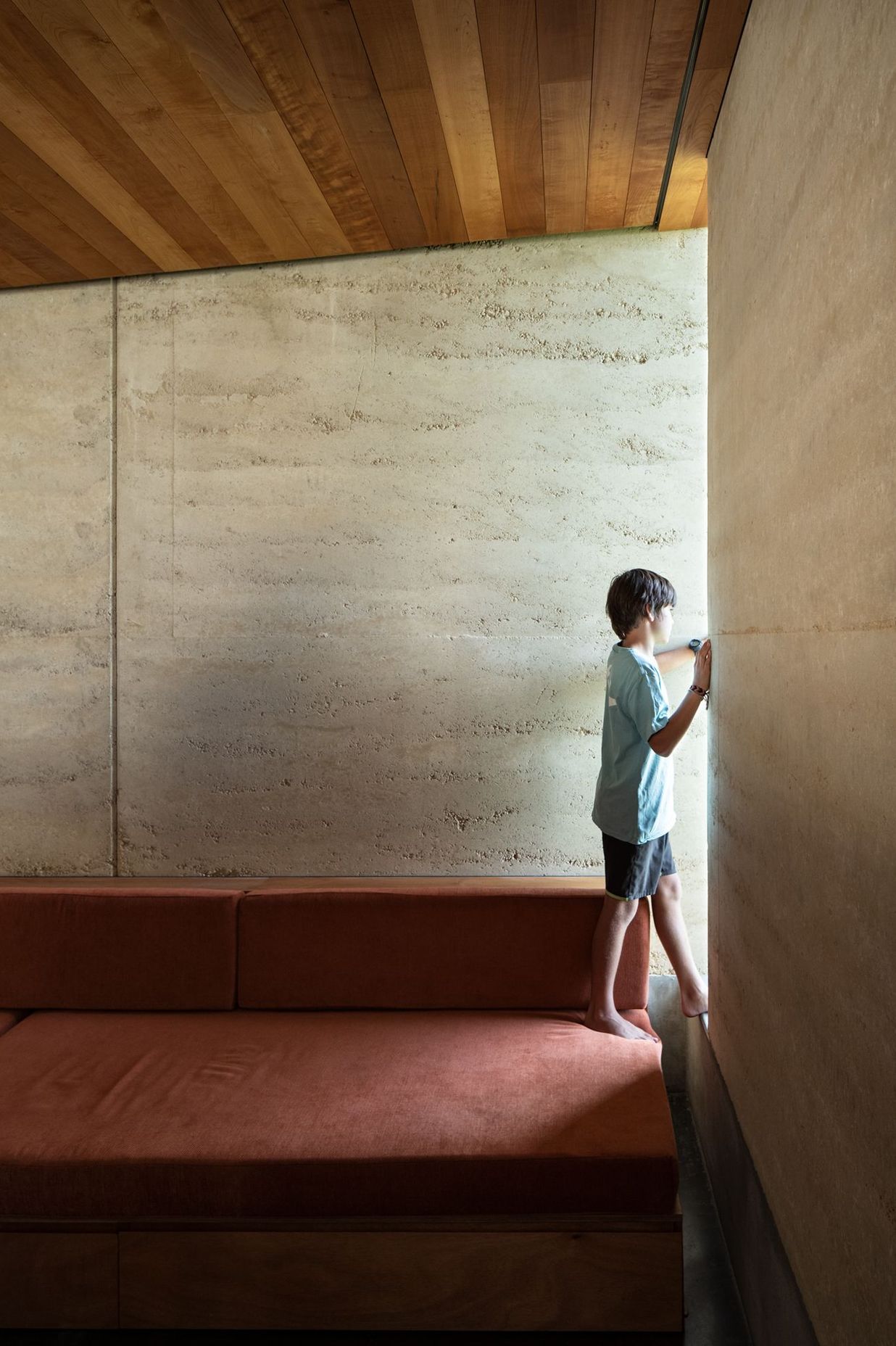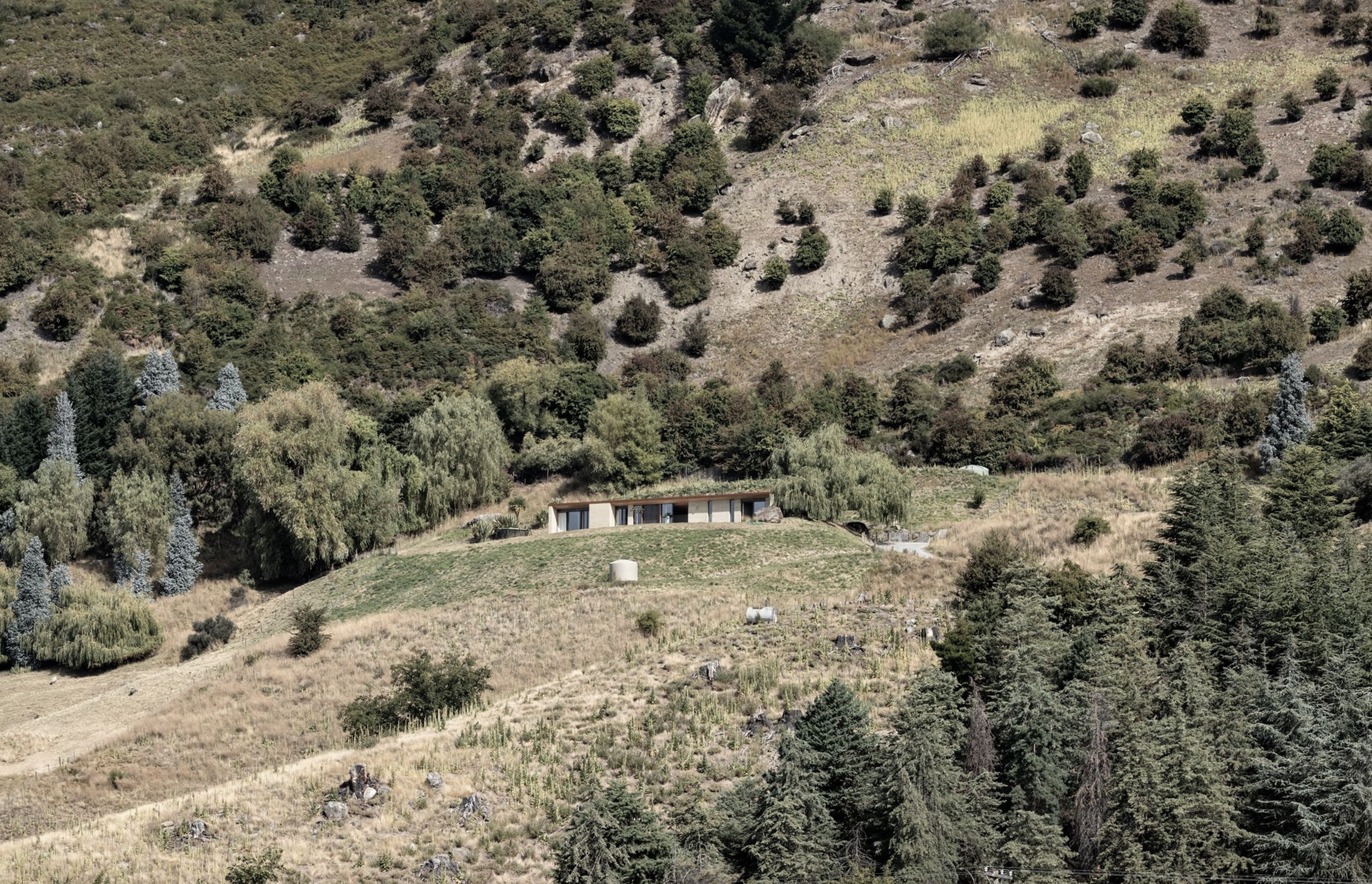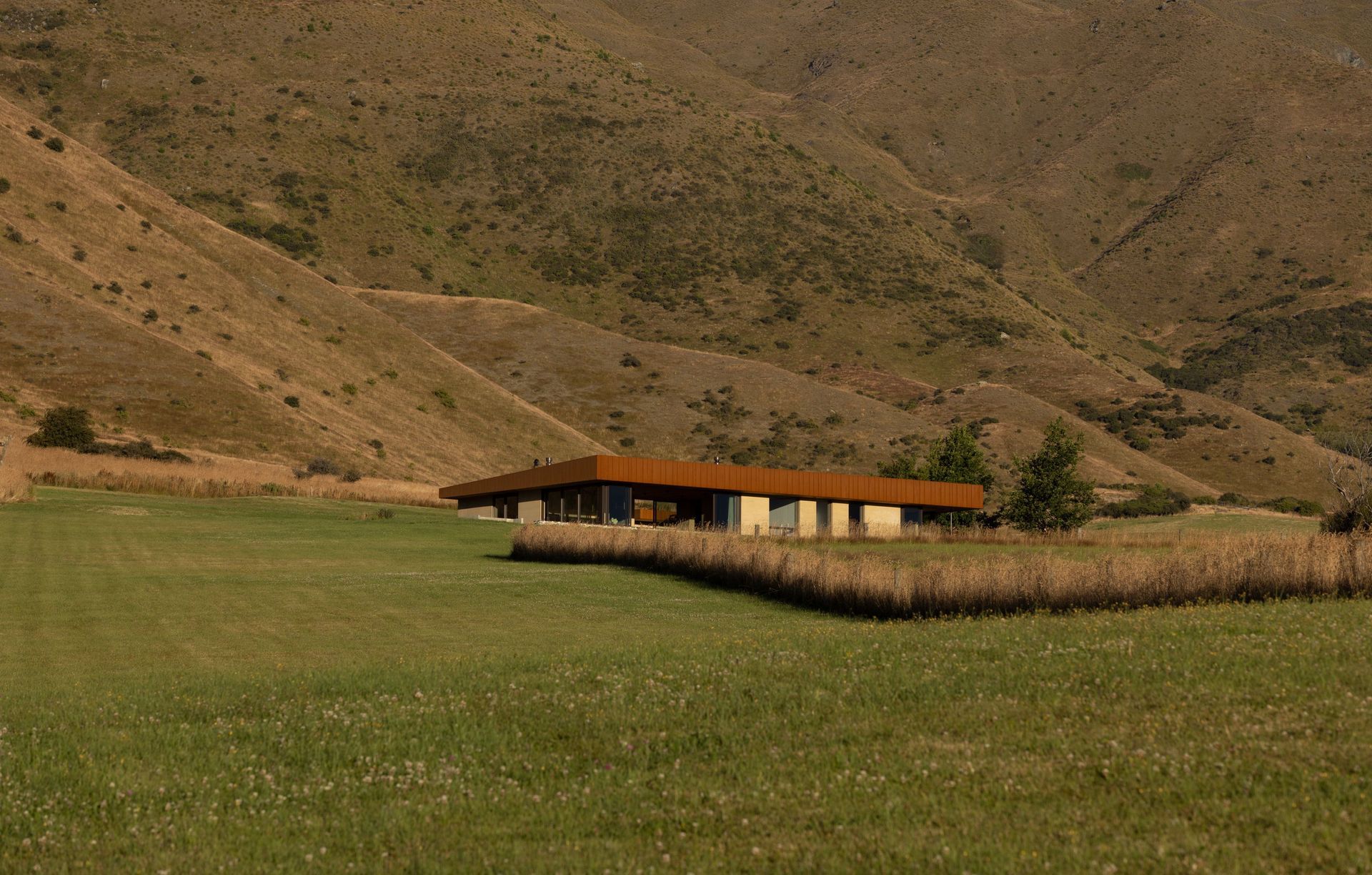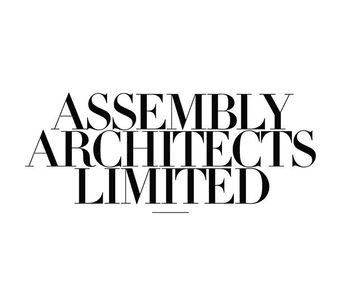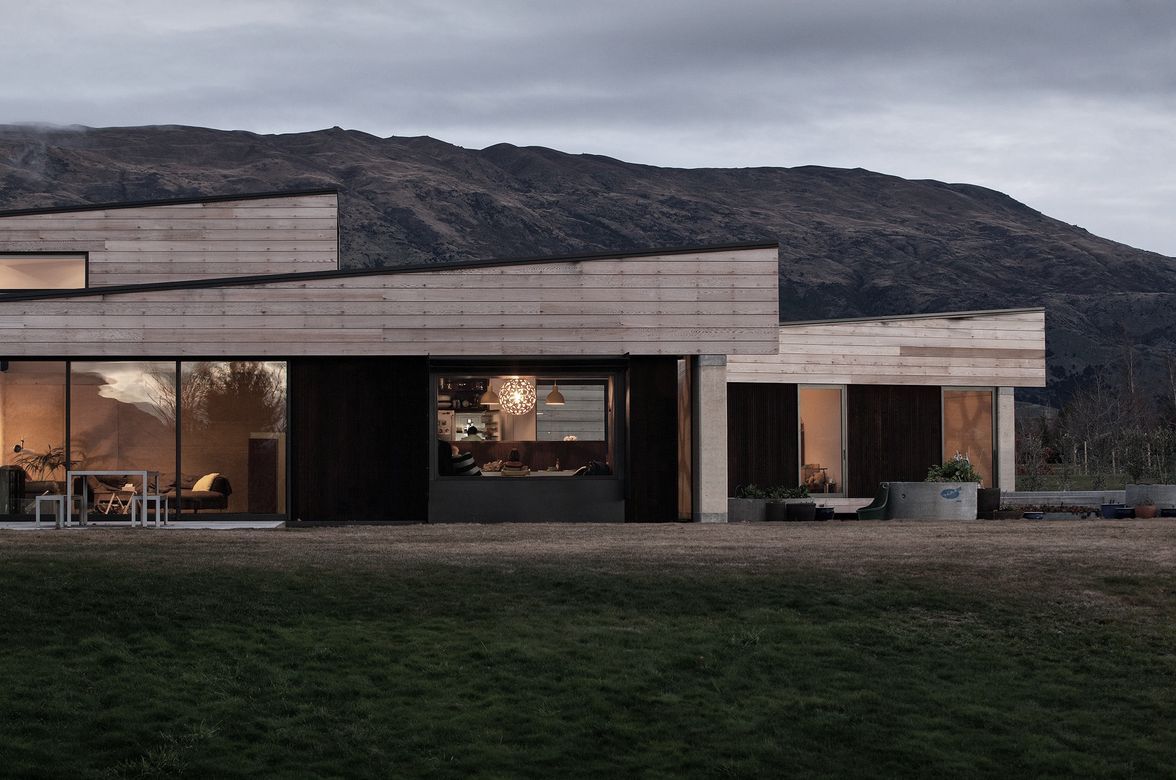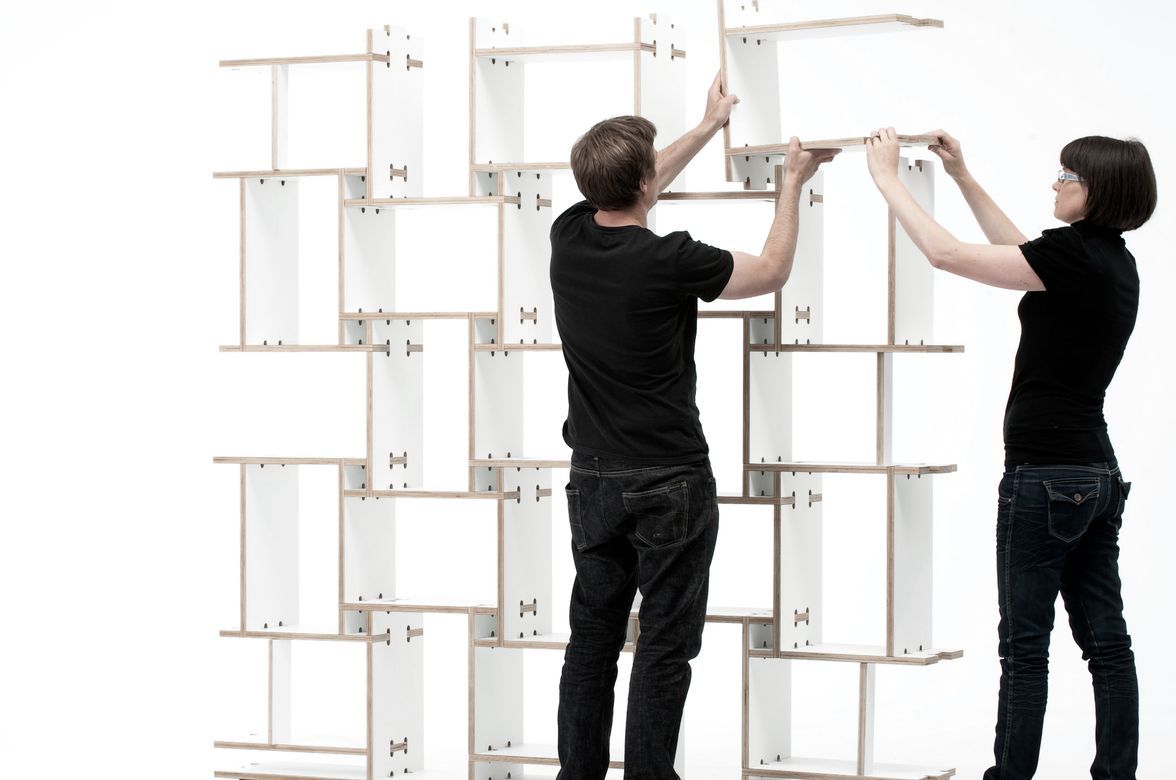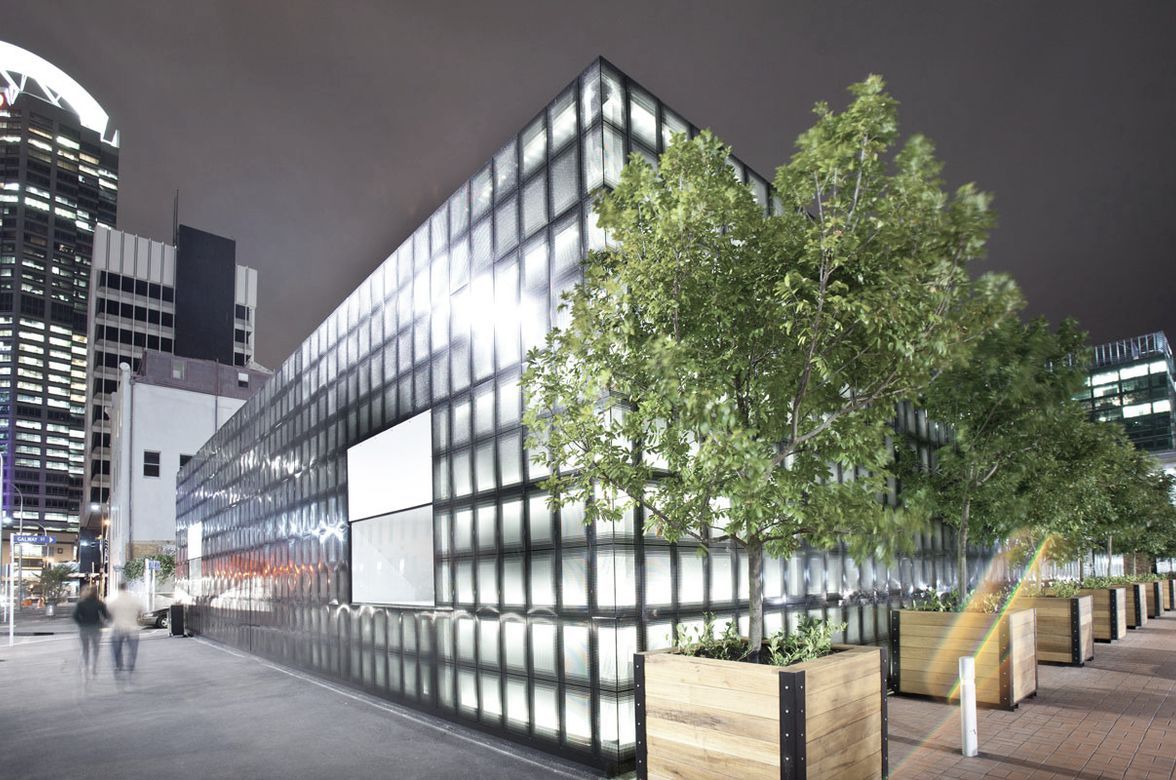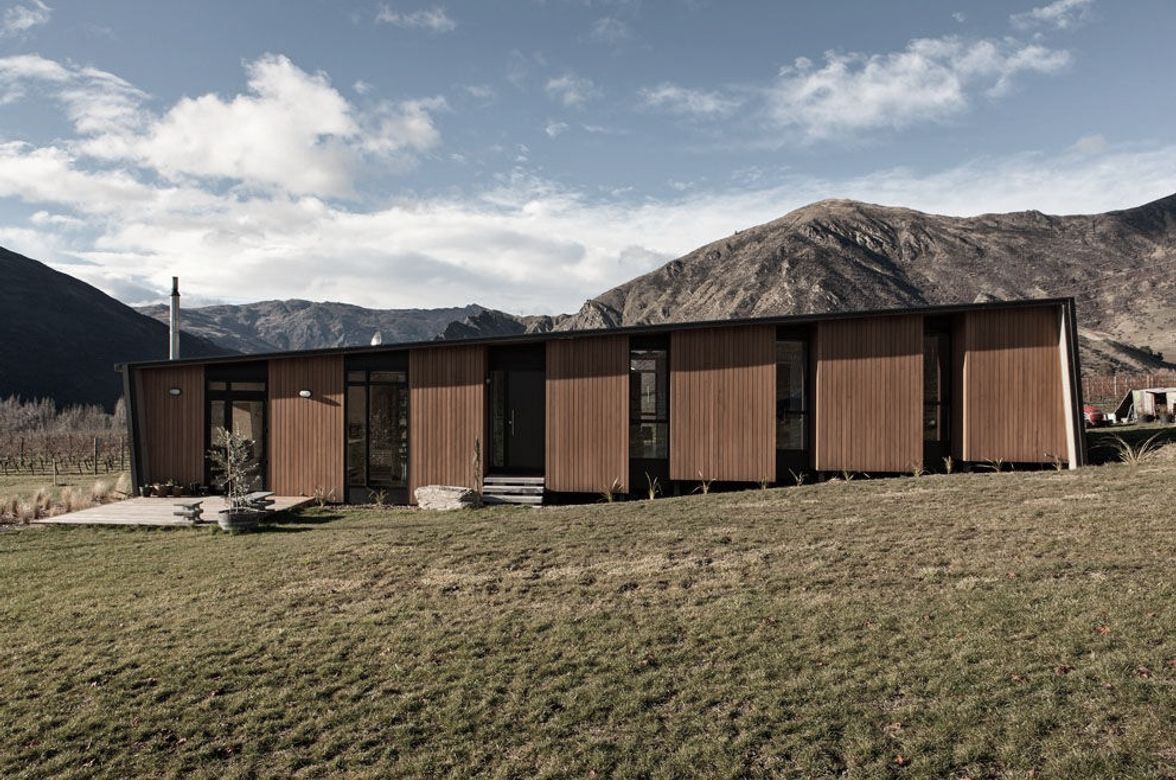Mt Barker Residence
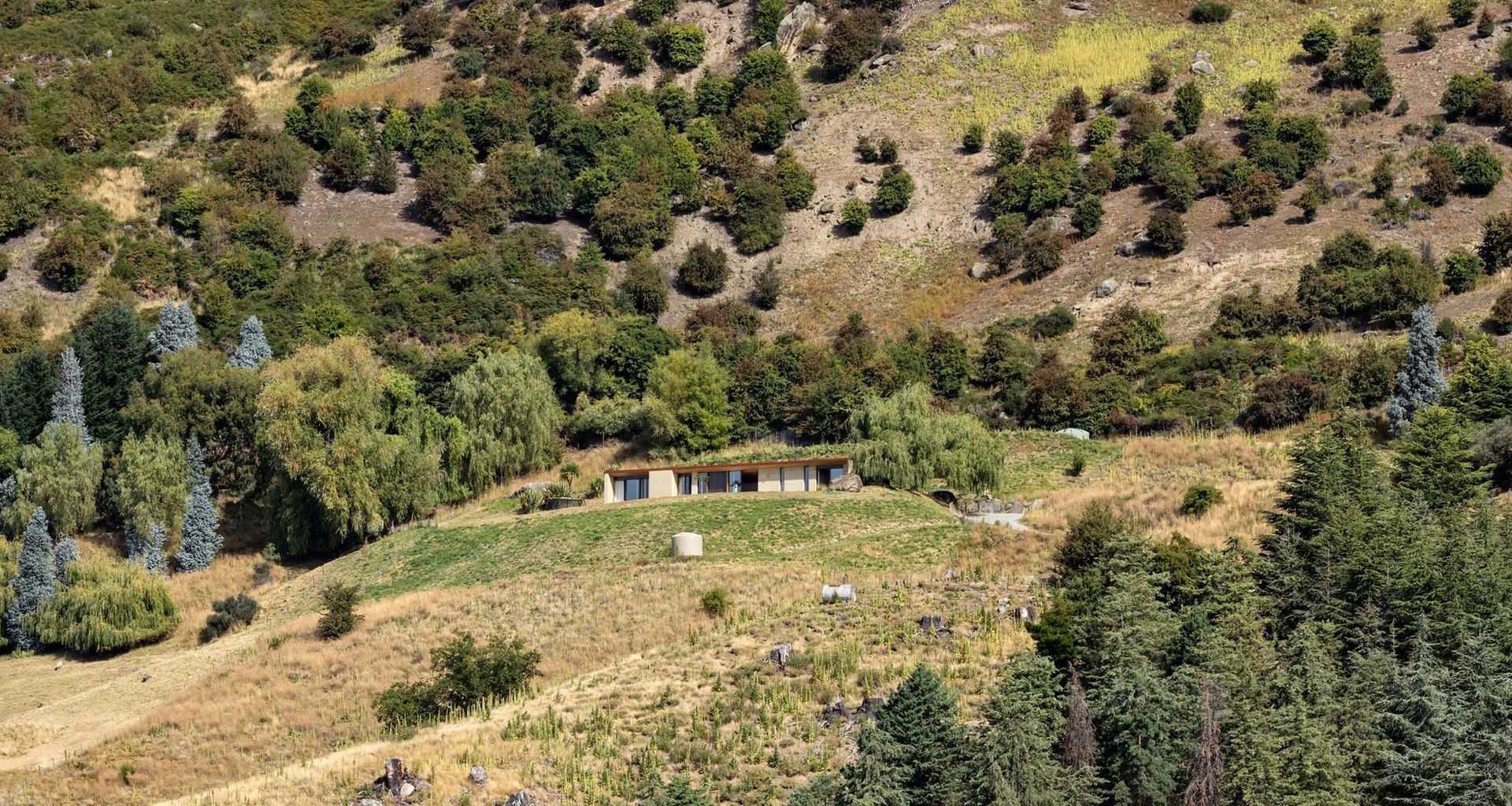
Of the Land: Building in one of the most beautiful environments in the world required a special building material.
It may be a construction technique few Kiwis have heard of but rammed earth construction has an enduring presence in New Zealand beginning with Pompallier House in the Bay of Islands, which was built in 1841 and is still standing, the oldest surviving example of rammed earth construction in this country.
Flash forward 180 years and there are now more than 600 rammed earth structures in New Zealand, with interest continuing to grow, particularly in the residential sector.
One of the reasons for that increased interest is the number of inherent advantages rammed earth offers, says Louise Wright of Assembly Architects.
“Rammed earth is a low-maintenance, dimensionally stable material that offers exceptional thermal and acoustic qualities, as well as having an understated natural beauty.
“It is however, a raw beauty that lays bare any imperfections, which ultimately have to be embraced and so, because of that, it’s not for everyone. However, it’s such a rich material that imparts a much softer sound and warmer feel than concrete.”
“It is also a surprisingly cost-effective material when compared to other high-end architectural materials,” adds Justin Wright. “And Wanaka is such a great environment for rammed earth houses.”
The Wrights are no strangers to rammed earth construction, having designed a similar property a couple of years ago, which was a Home of the Year finalist.
“Our clients had seen that property and were keen to look at how we could design a home that would accommodate their young family,” says Louise.
“They had been living overseas for a number of years and were returning to Wanaka to be close to family. They had secured a north-facing section with a breathtaking outlook and wanted a house that maximised that connection to the landscape.”
Unlike the expansive vista, the building platform was a relatively narrow rectangle oriented towards the view, which necessitated a low, linear design, with all of the primary rooms on the northern side, says Justin.
“The owners weren’t looking for an ostentatious house, having lived in Singapore they were used to the smaller footprint that high-density living necessitates. As such we were able to deliver a programme that expressed all of their requirements within the relatively constrained building platform.
“The internal spaces aren’t particularly voluminous, however, they have been designed to maximise use, in some instances doing double duty—a multipurpose room can accommodate guests or be used as a yoga room or play space for the children, while the concrete fire surround serves to divide the living area creating an intimate, snug-like space on one side where the family watches television.”
In order to further capitalise on the available floor space, the architects limited the rammed earth walls—which come in at 450mm deep—to the perimeter, with one or two exceptions, choosing instead to utilise standard timber framing for internal partitions.
“We always say to our clients that there are two factors to building a new house that you can control when it comes to cost and that’s the size of the house and the level of quality of the end product—everything else is subject to external factors,” says Justin.
“As architects, our first choice is to always choose quality over quantity and so by ensuring that the floor plan was as concise as possible the focus became about allowing the materials to provide the ‘wow factor’, which included the Corten steel flashing detail, macrocarpa soffit and southern beech ceilings.”
“All of these materials are known for their honesty of expression,” adds Louise. “Which was part of the decision behind leaving the concrete footings exposed, also. The point is that while this is a beautiful house in a stunning location, it is not a precious house and has been designed to accommodate the requirements of this family.”
A central part of those requirements was for connection to the outdoors, which the architects provided with a terrace on the north side of the living area and a courtyard to the south. Stacking doors on both sides allow the spaces to be completely opened up to become one large indoor-outdoor space.
“The site is reasonably sheltered, however it is subject to intense sun, especially during the summer months, so the courtyard provides respite and also engages with the hills behind the property.
“Conversely, the northern terrace—along with the earth walls—soaks up the sun in winter heating the slab and allowing for the slow release of that warmth throughout the night. The house really moderates the internal temperature year round.”
No project details available for this project.
Request more information from this professional.
Professionals used in Mt Barker Residence
More projects by Assembly Architects
About the
Professional
Assembly is an Arrowtown based architecture practice delivering exceptional architecture with personality, connection to landscape and considered construction.
We design homes and special projects in the Queenstown Lakes district, Wanaka and Central Otago. Current projects include heritage sensitive homes in Arrowtown, a rammed earth home in Wanaka, and distinctive new homes at Mount Cardrona Station, the Crown Terrace, Ben Lomond and Lowburn Mt Pisa.
Our homes are decidedly personal and individual, strongly connected to landscape, and expressed with detailed materiality. Design communication is huge to us. We utilise design tools that visually communicate the design in an engaging, interactive and visually realistic method.
Registered Architects Louise Wright and Justin Wright established Assembly in Wellington in 2005, and moved to Arrowtown in 2012. Our Arrowtown studio is situated on Arrow Lane in the heart of Arrowtown’s historic town centre.
The studio comprises a tight knit and talented team – Emma Schmitz, Marcus Kirk, Simon Khouri, Catarina Peeters and Matt Connolly, who together with Justin and Louise work in small teams to bring your design to life
In 2019 Assembly was a founding signatory to the NZ Architect’s Declare Climate & Biodiversity Emergency.
Assembly is a New Zealand Institute of Architects practice.
- ArchiPro Member since2016
- Follow
- Locations
- More information
Why ArchiPro?
No more endless searching -
Everything you need, all in one place.Real projects, real experts -
Work with vetted architects, designers, and suppliers.Designed for New Zealand -
Projects, products, and professionals that meet local standards.From inspiration to reality -
Find your style and connect with the experts behind it.Start your Project
Start you project with a free account to unlock features designed to help you simplify your building project.
Learn MoreBecome a Pro
Showcase your business on ArchiPro and join industry leading brands showcasing their products and expertise.
Learn More